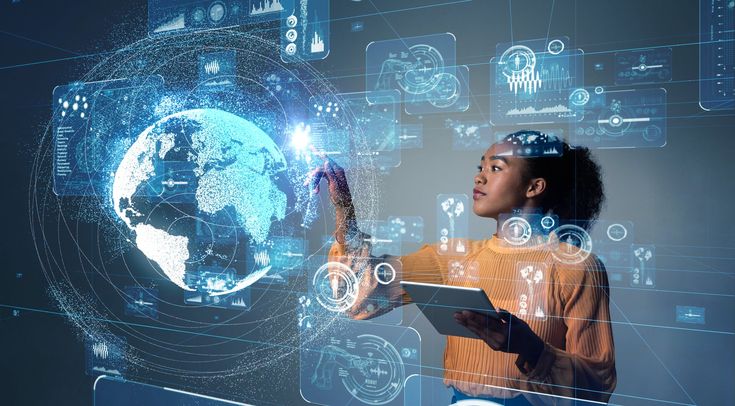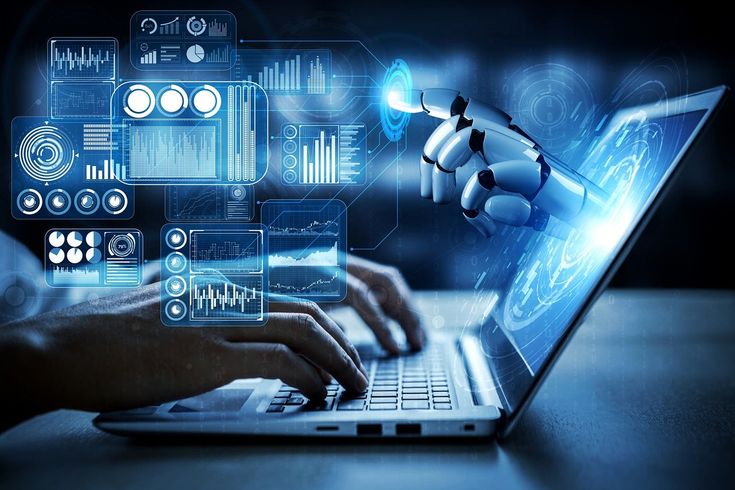In an age where climate change, resource depletion, and environmental degradation are pressing global concerns, technology is emerging as a powerful ally in promoting sustainability. By 2025, technological innovations are making it easier than ever to adopt sustainable practices in daily life, businesses, and communities. Whether it’s harnessing renewable energy, minimizing waste, or promoting eco-conscious habits, technology offers a myriad of solutions for a greener future. Here’s how you can embrace sustainability through tech in 2025.

1. The Role of Renewable Energy
The transition to renewable energy sources is at the forefront of sustainability efforts. Solar, wind, and hydroelectric power technologies have become more efficient and accessible, enabling individuals and businesses to reduce their carbon footprint significantly.
- Smart Solar Panels: Advanced solar panels equipped with AI optimize energy capture by tracking sunlight patterns and adjusting angles accordingly.
- Microgrids: Decentralized energy systems powered by renewables allow communities to generate and distribute their own electricity, reducing reliance on fossil fuels.
- Energy Storage: Innovations in battery technology, such as solid-state batteries, enable efficient storage of renewable energy for consistent supply.
- How to Embrace: Install smart solar systems at home or advocate for renewable energy adoption in your community. Many governments offer subsidies to make this transition cost-effective.
2. Smart Homes for Sustainable Living
Smart home technologies have evolved to make sustainable living seamless. Connected devices and IoT-based solutions are enabling energy conservation, waste reduction, and efficient resource management.
- Energy Efficiency: Smart thermostats, lighting systems, and appliances automatically adjust to minimize energy use.
- Water Conservation: IoT-enabled devices like smart irrigation systems reduce water wastage by analyzing weather and soil conditions.
- Waste Management: Smart trash bins segregate recyclables and compostables, encouraging eco-friendly waste disposal.
- How to Embrace: Upgrade your home with energy-efficient appliances and connect them through a central smart hub for better control and monitoring.
3. Green Transportation
Transportation is a major contributor to greenhouse gas emissions, but technology is paving the way for greener alternatives. By 2025, sustainable transportation solutions are widely available, making it easier to reduce your travel-related carbon footprint.
- Electric Vehicles (EVs): EVs are now more affordable, with extended battery life and a growing charging infrastructure.
- Shared Mobility: Ride-sharing apps integrated with AI promote carpooling and public transportation use.
- Micromobility: Electric scooters, bikes, and other small-scale transportation options offer eco-friendly commuting solutions.
- How to Embrace: Opt for EVs or shared mobility services for your daily commute. Additionally, advocate for improved public transportation systems in your city.
Also Read: The rise of Digital Nomads: Tips to Thrive
Also Read: Top 10 Tech Trends Dominating 2025
4. Circular Economy and Sustainable Manufacturing
The circular economy model emphasizes reusing, recycling, and repurposing resources to minimize waste. Technology is driving this movement by creating innovative ways to extend product lifecycles and reduce environmental impact.
- 3D Printing: On-demand production using recycled materials reduces waste and overproduction.
- IoT in Manufacturing: Sensors in factories monitor resource use, ensuring optimal efficiency and minimal waste.
- Recycling Tech: AI-powered systems sort recyclables with greater accuracy, improving recycling rates.
- How to Embrace: Support businesses that adopt circular economy practices and choose products made from recycled or sustainable materials.
5. Sustainable Agriculture
Agriculture is another sector benefiting from technological advancements. Sustainable farming practices powered by tech ensure food security while preserving natural resources.
- Precision Agriculture: Drones and AI analyze crop health, soil conditions, and weather patterns, enabling targeted interventions.
- Vertical Farming: Indoor farms powered by AI and LED lighting produce crops year-round, using less water and land.
- Blockchain for Transparency: Blockchain ensures traceability in the food supply chain, promoting ethical sourcing and reducing waste.
- How to Embrace: Purchase produce from sustainable farms or grow your own food using hydroponic or vertical farming techniques.

6. Digital Tools for Eco-Conscious Choices
Making sustainable choices is easier with digital tools that provide insights and recommendations tailored to your lifestyle.
- Carbon Footprint Trackers: Apps like Giki or Capture analyze your activities and offer actionable tips to reduce emissions.
- Eco-Friendly Marketplaces: Online platforms connect consumers with sustainable products and services.
- Education Platforms: AI-driven platforms offer courses and resources on sustainability practices.
- How to Embrace: Use these tools to track your impact and make informed decisions about purchases and daily habits.
7. Green Data Centers and Cloud Computing
As the demand for digital services grows, so does the need for energy-efficient data management solutions. Green data centers and cloud computing are addressing this challenge by reducing the environmental impact of digital infrastructure.
- Energy Efficiency: Data centers now run on renewable energy and use advanced cooling systems to minimize power consumption.
- Edge Computing: Processing data closer to its source reduces energy usage and latency.
- Virtualization: Consolidating multiple servers into a single physical machine reduces hardware requirements and energy use.
- How to Embrace: Opt for cloud services powered by green data centers and reduce unnecessary data storage.
8. Artificial Intelligence for Environmental Monitoring
AI is playing a pivotal role in monitoring and mitigating environmental issues. From predicting natural disasters to tracking wildlife populations, AI-powered tools are essential for sustainability.
- Climate Predictions: AI models analyze vast datasets to predict climate trends and inform policy decisions.
- Wildlife Conservation: AI-powered cameras and drones monitor endangered species and prevent poaching.
- Pollution Control: Sensors equipped with AI track air and water quality, enabling timely interventions.
- How to Embrace: Support organizations that use AI for environmental protection or participate in citizen science projects that leverage these technologies.
9. Digital Nomadism and Remote Work
Remote work and digital nomadism, enabled by tech, reduce the need for commuting and office infrastructure, contributing to a lower carbon footprint.
- Virtual Collaboration Tools: Platforms like Zoom, Microsoft Teams, and Slack facilitate remote work.
- Decentralized Workspaces: Co-working spaces powered by renewable energy support sustainable business operations.
- Digital Conferences: Virtual events eliminate the environmental impact of travel and physical venues.
- How to Embrace: Embrace remote work opportunities and advocate for virtual meetings over in-person gatherings when possible.
10. Educating the Next Generation
Empowering future generations with knowledge about sustainability is key to long-term change. Technology is transforming education to instill eco-conscious values.
- Interactive Learning Tools: AR and VR create immersive experiences about environmental conservation.
- Gamification: Apps and games teach sustainability concepts in engaging ways.
- Open Access Resources: Online platforms offer free courses on climate change, renewable energy, and sustainable practices.
- How to Embrace: Encourage children to use educational tech tools and participate in programs focused on sustainability.
Conclusion
Technology and sustainability are no longer separate domains; they are deeply intertwined, offering innovative solutions to pressing environmental challenges. By leveraging renewable energy, smart systems, green transportation, and digital tools, individuals and businesses can contribute to a more sustainable future.
In 2025, embracing sustainability through tech is not just about reducing your carbon footprint; it’s about fostering a mindset of innovation, responsibility, and resilience. The power to create a greener world is in our hands. Let’s use it wisely.


